1930s
Mystery Gadget 68
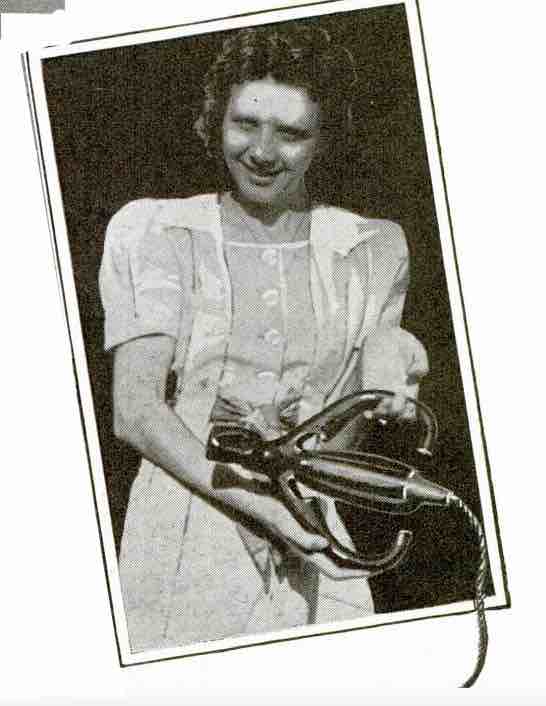
What is this hook used for?
The answer is here.
And after the jump.
More in extended >>
Posted By: Paul - Sat Nov 17, 2018 -
Comments (2)
Category: Technology, 1930s
Follies of the Madmen #395
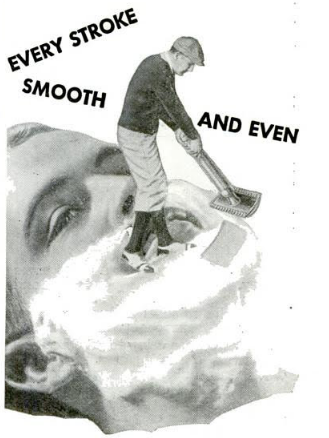
Shaving is just like Gulliver serving as a golf course for Lilliputians.
Full ad here.
Posted By: Paul - Thu Nov 15, 2018 -
Comments (1)
Category: Business, Advertising, Hygiene, Surrealism, 1930s
Artwork Khrushchev Probably Would Not Have Liked 17
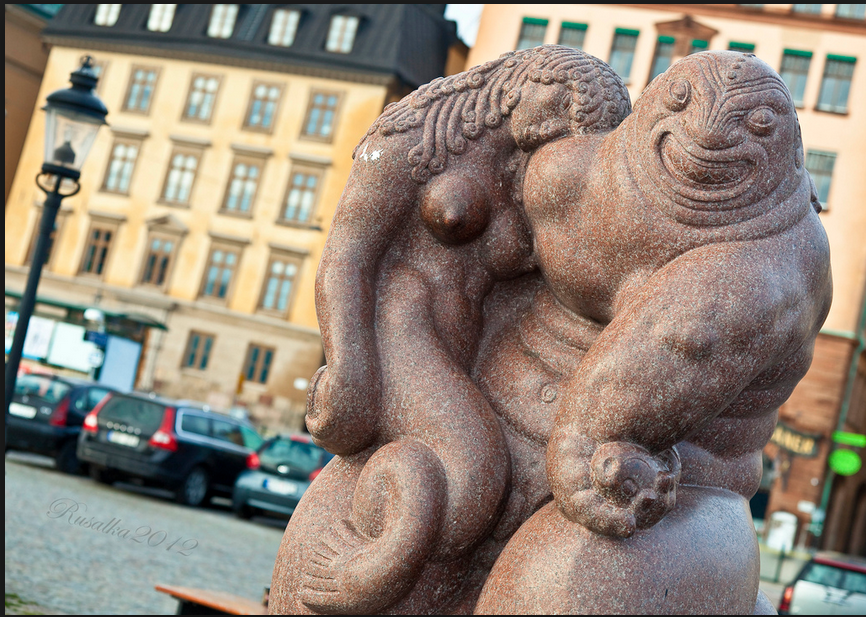
Sjöguden (The sea god) by Carl Milles.
Wikipedia page for the artist.
Posted By: Paul - Mon Nov 05, 2018 -
Comments (3)
Category: Art, 1930s, Europe, Russia
The Marionettes of Donald Cordry
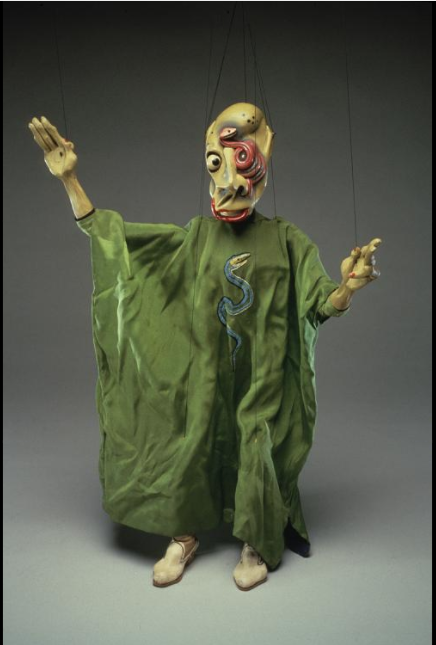
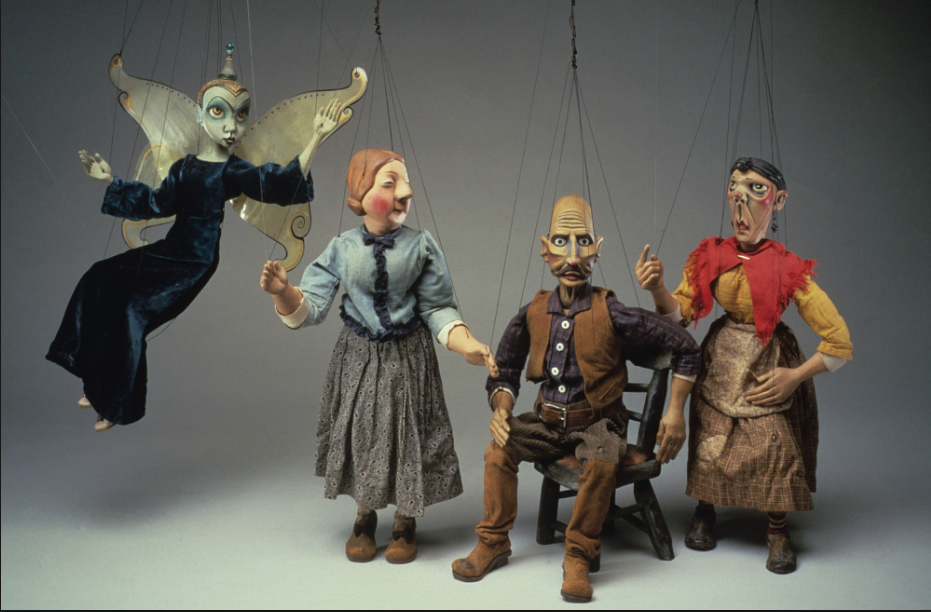
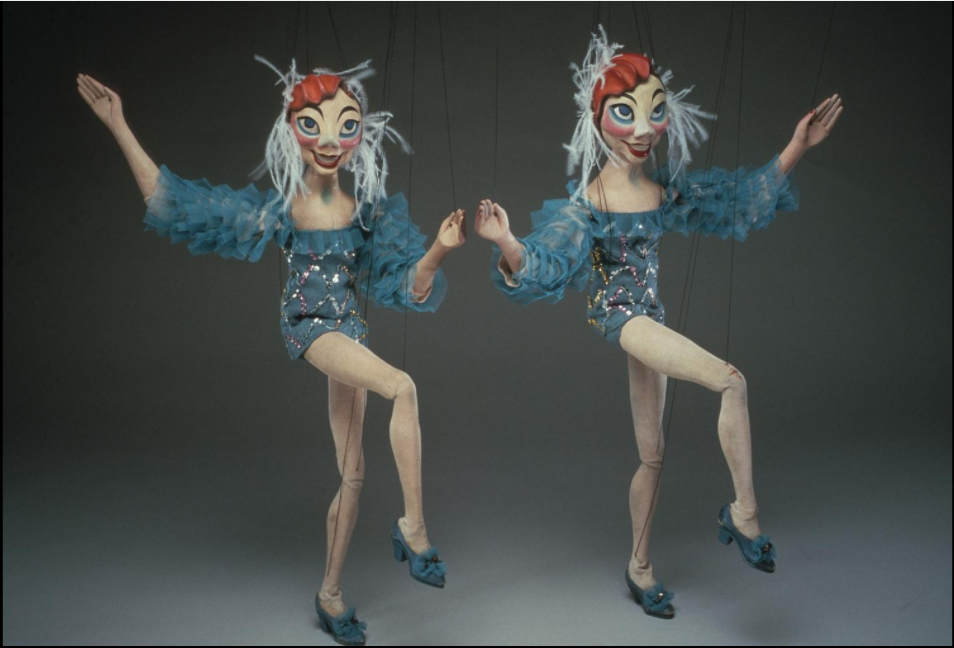
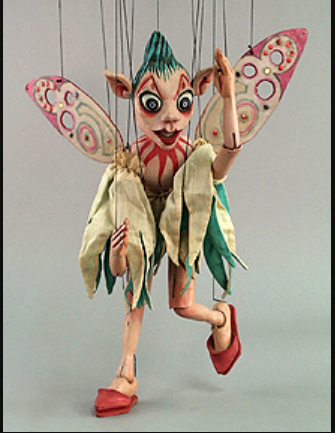
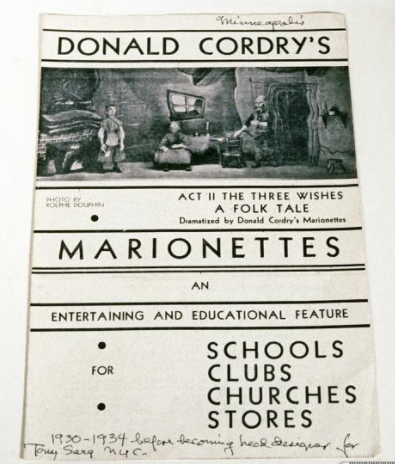
The green fairy is one of four marionettes used by Donald Cordry in his production of "The Three Wishes" that played in Minneapolis between 1930-1934. "The Three Wishes" was first written as a play for puppets by German writer Fronz von Pocci around 1900 and continues to be a popular play performed in many versions. Hand carved from wood, the fairy has an ethereal green painted face with joined eyebrows, black lips, large eyes with some hint of Asiatic features. She wears a clear blue glass pagoda head ornament in her golden hair , and she is wearing a long blue-green velvet dress, with beige tights,and rhinestone shoes with leather heels. Her wings are made of plastic. These charming carved and painted marionettes are great examples of Cordry's decorative sense of design and craftsmanship. The angel is operated with an airplane holder and eight strings.
The Three Wishes was first written as a play for puppets by German writer Fronz von Pocci around 1900. Donald Cordry (1907-1978) was a well known and highly respected American artist, craftsmen and puppeteer of the 1920s and 30s. He was gifted with a great decorative sense and his craftsmanship was extraordinary. Born in Minnesota, Cordry attended the Minneapolis School of Art from 1924-1929 and after graduation he went to work for the Board of Education. While his main job was to lecture and teach classes, Cordry took used the opportunity to create and perform his own marionette show with both hand puppets and marionettes. From late 1930 to early 1931 Cordry joined the Rufus Rose Company, owned by Rupert and Margo Rose that played the school and college circuit on the East coast. In the summer of 1931 he traveled to Mexico where he developed a life long interest and dedication to the arts and landscape of Mexico. An avid collector of ethnographic material for over 40 years, Cordry amassed a large collection of indigenous Mexican arts and crafts which he meticulously documented and researched. His passion also included Native American cultures, and in the mid 1930s he worked at the Heye Museum of Indian Art in New York City where he cataloged and researched objects for the museum. (The Smithsonian's National Museum of Natural History owns a large collection of Mexican masks donated by the Cordry family in the early 1980s.) After returning to Minneapolis in late 1931, Cordry started creating his own puppets. He formed his own company and performed shows until 1934.
The Dolly Sisters and the Three Wishes were popular with young and old audiences alike. In June of 1934, Cordry moved to New York and worked with Tony Sarg, a well known and established puppeteer in his own right, and taught classes at Sarg's Summer School. Cordry made a number of puppets for Sarg and toured with his company from 1934-1936. By 1937 poor health forced him to give up puppetry and he moved to Mexico. He did however, continue his field research on indigenous peoples and later on published two books - Mexican Indian Costumes (1968) and Mexican Masks (c1980). "The Three WIshes" was Cordry's final production before he moved to Mexico with his wife. The puppets and sets from this production were shipped in crates to Mexico and remained there almost fifty years. In 1982, his widow Dorothy Mann Cordry donated this collections to the Smithsonian which included not only the marionettes, but props made to scale and a fully operational puppet stage.
Posted By: Paul - Mon Oct 15, 2018 -
Comments (5)
Category: Art, Design and Designers, Puppets and Automatons, 1930s
Rollerskating as Art
This artform is pretty well extinct, so far as I can tell.
Posted By: Paul - Sun Sep 30, 2018 -
Comments (5)
Category: Bicycles and Other Human-powered Vehicles, 1930s, Dance
Johnson Smith Catalog Item #38
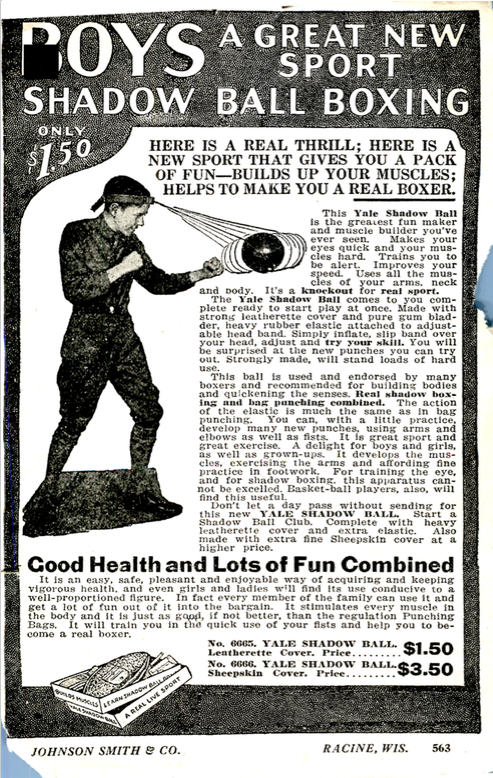
From the 1930s catalog.
Posted By: Paul - Mon Sep 10, 2018 -
Comments (3)
Category: Johnson Smith Catalog, Sports, 1930s, Brain Damage
Potato Candy
Which recipe do you prefer? In either case, be sure to whip some up for St. Patrick's Day--or anytime you want tuber-based sweets!Source.
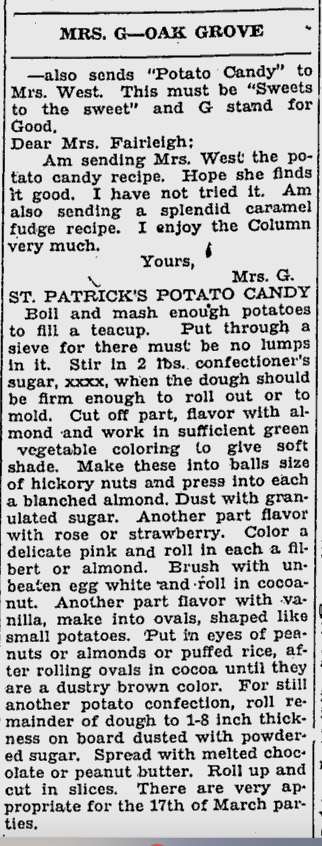
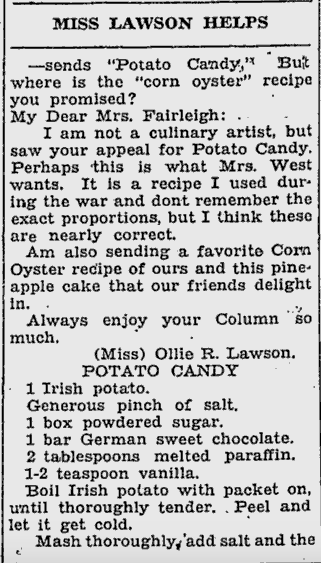
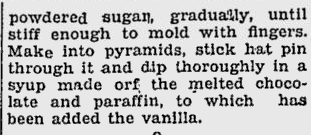
Posted By: Paul - Fri Aug 31, 2018 -
Comments (2)
Category: Candy, 1930s
Follies of the Madmen #380
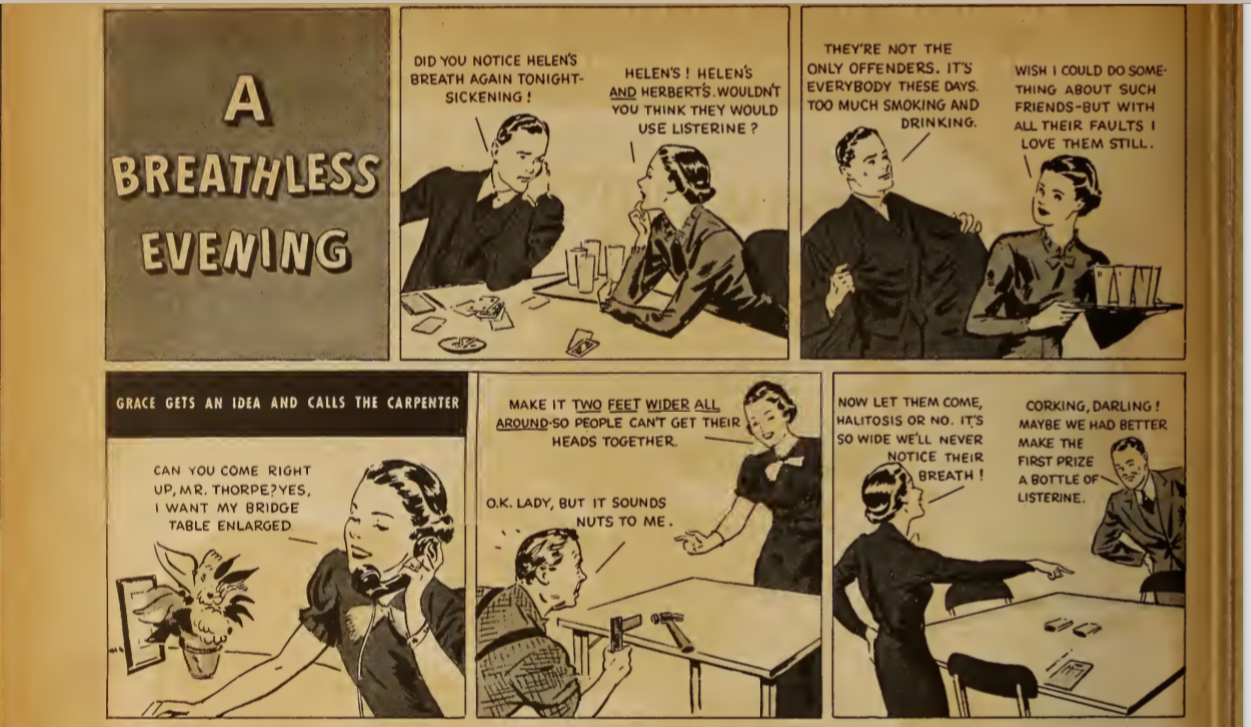

Original ad from Radio Mirror for September 1937.
Posted By: Paul - Fri Aug 24, 2018 -
Comments (5)
Category: Business, Advertising, Products, Hygiene, 1930s
Mystery Illustration 75
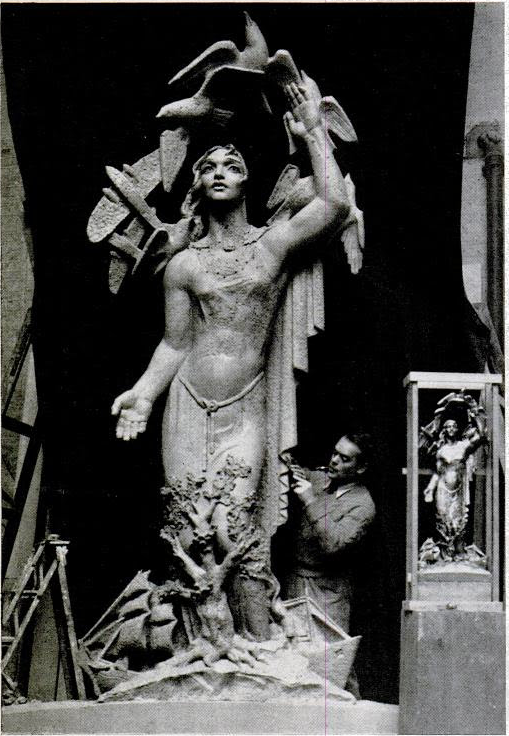
What does this 1939 statue symbolize?
The answer is here.
And after the jump.
More in extended >>
Posted By: Paul - Tue Aug 21, 2018 -
Comments (5)
Category: Statues and Monuments, 1930s
Follies of the Madmen #376
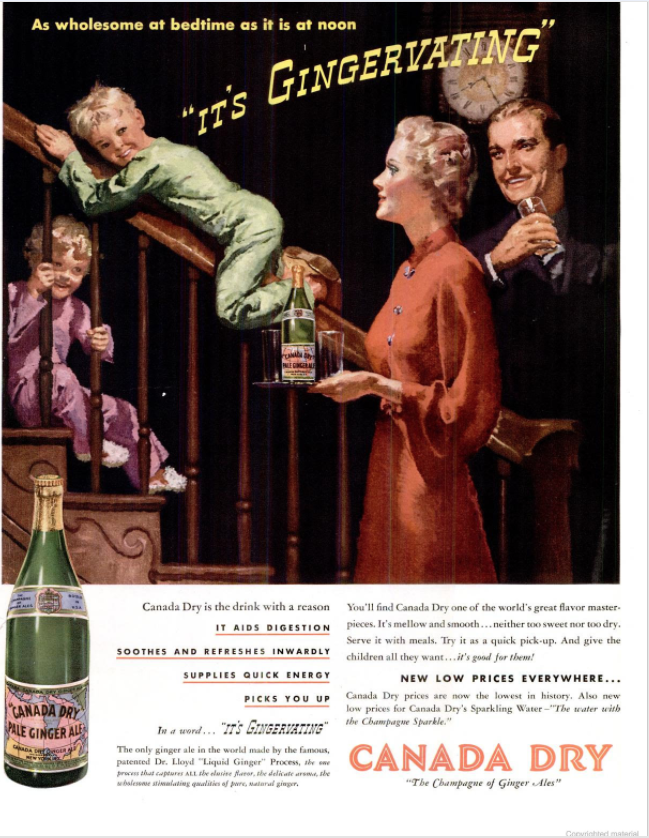
A quick hit of sugar at bedtime will send those kiddies straight to slumberland!
Original ad here.
Posted By: Paul - Wed Jul 25, 2018 -
Comments (3)
Category: Business, Advertising, Children, Soda, Pop, Soft Drinks and other Non-Alcoholic Beverages, 1930s

| Who We Are |
|---|
| Alex Boese Alex is the creator and curator of the Museum of Hoaxes. He's also the author of various weird, non-fiction, science-themed books such as Elephants on Acid and Psychedelic Apes. Paul Di Filippo Paul has been paid to put weird ideas into fictional form for over thirty years, in his career as a noted science fiction writer. He has recently begun blogging on many curious topics with three fellow writers at The Inferior 4+1. Contact Us |




